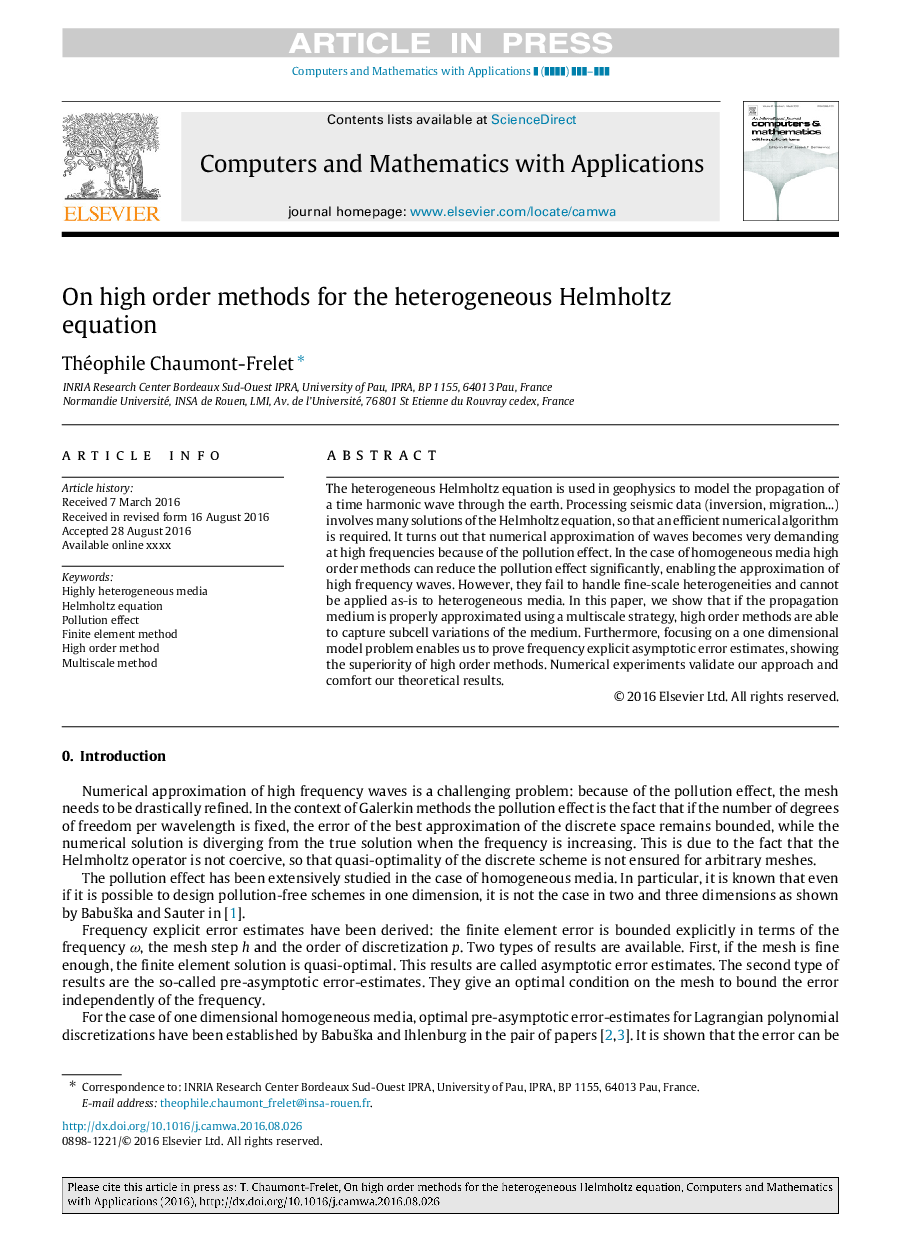| Article ID | Journal | Published Year | Pages | File Type |
|---|---|---|---|---|
| 4958730 | Computers & Mathematics with Applications | 2016 | 23 Pages |
Abstract
The heterogeneous Helmholtz equation is used in geophysics to model the propagation of a time harmonic wave through the earth. Processing seismic data (inversion, migration...) involves many solutions of the Helmholtz equation, so that an efficient numerical algorithm is required. It turns out that numerical approximation of waves becomes very demanding at high frequencies because of the pollution effect. In the case of homogeneous media high order methods can reduce the pollution effect significantly, enabling the approximation of high frequency waves. However, they fail to handle fine-scale heterogeneities and cannot be applied as-is to heterogeneous media. In this paper, we show that if the propagation medium is properly approximated using a multiscale strategy, high order methods are able to capture subcell variations of the medium. Furthermore, focusing on a one dimensional model problem enables us to prove frequency explicit asymptotic error estimates, showing the superiority of high order methods. Numerical experiments validate our approach and comfort our theoretical results.
Related Topics
Physical Sciences and Engineering
Computer Science
Computer Science (General)
Authors
Théophile Chaumont-Frelet,
